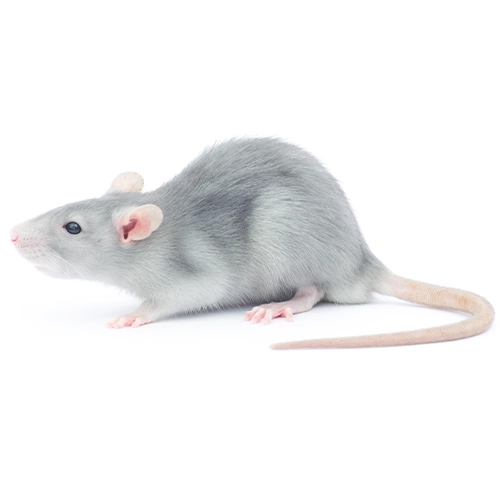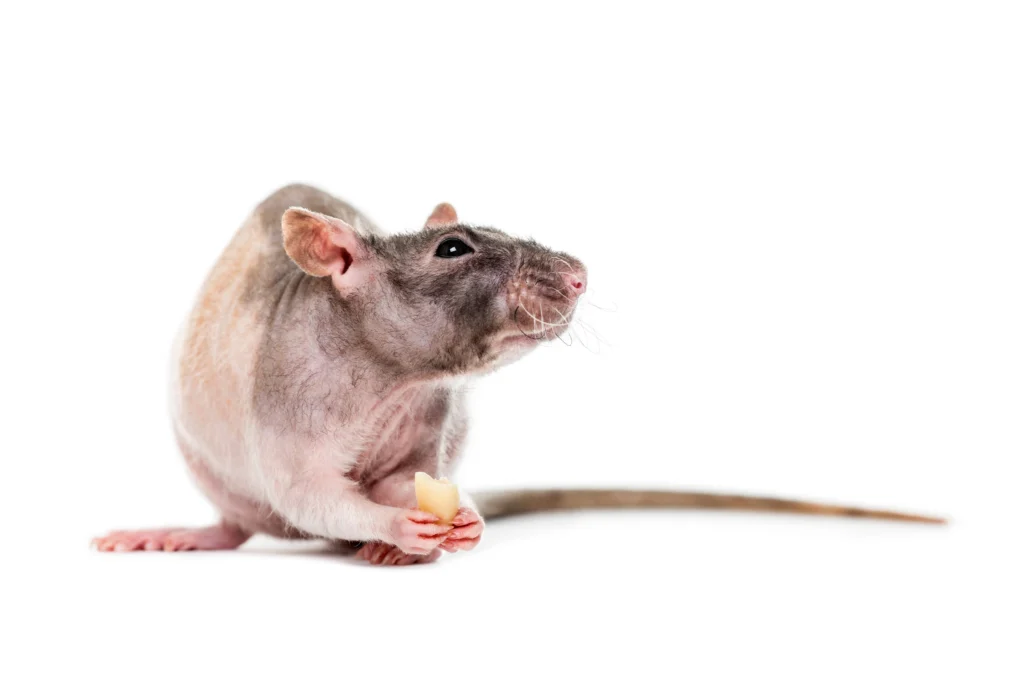A Comprehensive Guide to Species, Risks, and Effective Management Strategies



The intriguing world of rats in Colorado’s mountains reveals a delicate yet tenacious presence scurrying beneath the shadows. These rodents have established themselves in the Centennial State by navigating the tangle of urban alleyways and hidden holes. Their adaptability serves them well, allowing them to mix in with a variety of environments, from hectic metropolitan streets to peaceful mountain getaways. While some consider them pests, others marvel at their ability to survive hard winters and uncertain terrain. In this post, we will go over the many types of rats in Colorado, as well as the threats they pose and successful infestation management measures.
Understanding Rats
The best way to comprehend how rats operate is to learn about their intricate social structures, adaptive habits, and exceptional intelligence. Although most people criticize these creatures unfairly, rats possess sophisticated communication systems using a combination of vocalizations, body language, as well as scent marking to express emotions and create hierarchies within colonies.
Their strong sense of smell allows easy navigation through mazes in physical or social settings. They also have problem- solving abilities that are comparable to many other animals. Despite their reputation as pests, rats show empathy, building close attachments within their colonies and exhibiting altruistic actions toward their relatives. To understand how rats survive, one must grasp their persistence, ingenuity, and vital role in global ecosystems.
How Colorado’s Climate Affects Rats Distribution
Unexpectedly versatile animals, rats appear to flourish in Colorado’s varied environment. These hardy rodents have the perfect habitat in the diverse terrain and weather patterns of the state. Rats find it easy to live in Colorado’s moderate temperatures, which enable them to move about both urban and rural locations. Many areas of the state have a dry climate, which reduces the possibility of wet conditions and makes the environment less favorable for some diseases. These opportunistic foragers enjoy Colorado’s profusion of food supplies, which range from seeds and foliage in rural areas to leftovers from metropolitan areas.
Unexpectedly versatile animals, rats appear to flourish in Colorado’s varied environment. These hardy rodents have the perfect habitat in the diverse terrain and weather patterns of the state. Rats find it easy to live in Colorado’s moderate temperatures, which enable them to move about both urban and rural locations. Many areas of the state have a dry climate, which reduces the possibility of wet conditions and makes the environment less favorable for some diseases. These opportunistic foragers enjoy Colorado’s profusion of food supplies, which range from seeds and foliage in rural areas to leftovers from metropolitan areas.



Types of Rat Species in Colorado
Brown Rat
The brown rat, sometimes referred to as the Norway rat is an enduring symbol of adaptability in Colorado’s harsh environments. This rat species, with its shiny, reddish-brown coat and sharp, questioning eyes, lives well in all of Colorado’s many environments, from secluded highland areas to busy city streets. Quick-witted and cunning, the Norway rat scampers through the narrow streets of the state, its whiskers twitching in anticipation as it navigates through alleys and deserted buildings in quest
of food. It takes use of the many food supplies strewn across the countryside by foraging close to farms and riverbanks in the furthest reaches of rural areas. In spite of its widespread existence the Norway rat is a mysterious creature that embodies the resilience and flexibility needed to thrive in Colorado’s constantly shifting environment.
Roof Rat
The scientific name for the roof rat is Rattus rattus, and it is mostly present in Colorado’s suburban and urban environments, hiding in the cracks and crevices left by human occupation. The Roof rat has an air of urban mystery as it moves with amazing agility across the high domains of rooftops and rafters with the help of its long, thin physique and smooth, slate-gray fur. These rodents seek refuge in the warmth and cover of buildings in Colorado’s moderate temperature, where they forage among the urban sprawl for food. Because of their nocturnal inclinations and ability to adapt to human habitats, they are an elusive but constant presence in the Centennial State. Their subtle scuttling sounds echo through the night as they continue to survive within the complex urban ecosystem of Colorado.



Signs of Rat Infestation
Subtle yet sinister clues may start to appear in the silent nooks of abandoned areas, signaling the existence of a rat infestation. One sign that alerts homeowners about the unwanted guests is the delicate sounds of their small feet echoing in the silence of the night.
Unidentified chew marks on supposedly indestructible objects, such as electrical lines and cardboard boxes, reveal the stealthy destruction caused by these elusive rodents. Noticeable droppings that resemble black grains of rice appear on surfaces are vivid signs of infestation.
Another sign is the lingering smells of decay that permeate the atmosphere, serving as a spectral reminder of rats’ mysterious nighttime activities. When night draws in and the shadows grow longer, these seemingly harmless signs become rampant, revealing the insidious infestation of rats inside a home.
Potential Risks of Having Rats At Home
Rat infestations in homes provide a complex threat that includes structural damage, psychological discomfort, and health hazards. In addition to the immediate risk of contracting illnesses like salmonellosis from their excrement, rats can chew on electrical lines, posing a fire risk, and undermine structural integrity by tunneling through insulation and walls. Their presence might make residents feel more stressed and anxious, upsetting daily routines and lowering their sense of security at home. Unchecked infestations can also increase the expense of elimination and damage the property’s reputation. It is critical to take immediate action against rat infestations in order to protect people’s physical and mental health as well as the integrity of the home.
DIY Management Strategies
For do-it-yourself management of rat infestation to be effective it is essential to implement a thorough strategy that combines creativity and accuracy is required. The first step in a strategic intervention is to examine any possible access sites carefully, such as cracks or holes in walls. One effective way to catch rats with the least amount of damage is to place humane traps strategically in high-traffic areas.
You deprive rats of food and shelter with preventive measures such as caulking food containers and clearing debris, lessening their motivation to live on your property. Moreover, placing natural repellents near entryways, such peppermint oil or ammonia, discourages them from coming back. Maintaining proactive DIY management as the cornerstone of rat control at home requires regular monitoring and strategy adaptation to enable a dynamic response to changing infestation dynamics.
Reasons to Seek Expert Help
Involving the help of a pest control professional is one of the most sensible line of action when dealing with a rat infestation at home for a number of convincing reasons. First, experts have specific knowledge and experience in determining the degree of the infestation and carrying out successful eradication techniques. Because of their training, they are able to identify the environmental variables or entrance points that are causing the infestation, which provides complete remedies that they customize to the unique needs of each individual house.
Furthermore, professionals make use of cutting-edge tools and methods that are industry-certified to remove rats completely and safely from the property. In contrast to do-it-yourself approaches, which frequently fall short and could unintentionally make the situation worse, experts use tried-and-true techniques that put safety and effectiveness first. This helps in reducing the possibility of injury to both pets and occupants.



Homeowners can also enjoy priceless piece of mind knowing that their property is in skilled hands when they assign the work to specialists. People who use trustworthy pest control businesses get the guarantee of dependable service and outcomes, supported by warranties and follow-up inspections to guarantee long-term efficacy. Professional pest control services also strictly adhere to ethical norms and legal requirements, using less hazardous chemicals and, if feasible, ecologically friendly methods. In addition to protecting inhabitants’ health and welfare, this dedication to ethical pest control helps maintain the ecosystem’s delicate equilibrium.



Prevention Strategies for Rat Infestation
It requires a comprehensive strategy to block several entrance points and environmental conditions that support rat infestation. First, it is always crucial to maintain good hygiene inside the home. You discourage rats from gathering when you dispose of trash appropriately and place leftover food in closed containers.
Caulking openings in doors, walls or windows with durable materials like metal mesh or concrete can help prevent easier access. You can also reduce access points of rats by checking structures for cracks or fissures and fixing them right away.
Moreover, it is imperative to develop appropriate storage techniques. You can cut their food supply by clearing debris in both indoor and outdoor spaces. Routine inspection of utility wires and pipes can help detect these entry points for signs of leaks or damage. You can also incorporate natural deterrents such as planting mint, lavender, or other potent-smelling plants along the edge of buildings. Getting rid of overgrown plants and keeping the environment clean denies rats a place to hide and build nests, thereby discouraging infestations.
Colorado’s rat infestation problem necessitates creative solutions for efficient control. One can minimize their infestation by using a comprehensive strategy that incorporates state-of-the-art pest management technology, community education, and preventative sanitation practices. Colorado can build a strong defense against rat infestations and safeguard the health of its citizens and the environment by encouraging a shared commitment to rodent control.
If you think rats are causing you problems in Colorado Springs, CO or anywhere in Teller County or El Paso County, please do not hesitate to
contact us today! We will help resolve your problem quickly, safely, and at affordable rates.
